[ad_1]
Developed solely for the purpose of propelling Tadej Pogačar to a third Tour de France in 2023 and based very closely on the bike he rode to win the first two, the new Colnago V4RS (opens in new tab) is about as pure a racing bike as you’ll find.
It was developed in a revolutionary way. Given to Pogačar and his UAE Emirates team as five prototypes all with different layups or “stiffness matrices (opens in new tab)”, it was raced in real competition in 2022, with the ‘winner’ launched to the public as the V4RS in December at the team’s training camp in Spain in time for the 2023 season.
Despite being ‘built to win’ as the marketing puts it, Colnago will also of course aim to sell the V4RS to the public.
The night before the launch I’m having a conversation about this with Torgny Fjeldskaar, the Norwegian industrial designer who Colnago drafted in to design the new bike.
Fjeldskaar was the design lead at BMC for five years and worked for Cannondale in the early Noughties. He confirms that the subject of the target audience does come up when they’re creating the initial mood boards and that it’s not always straightforward.
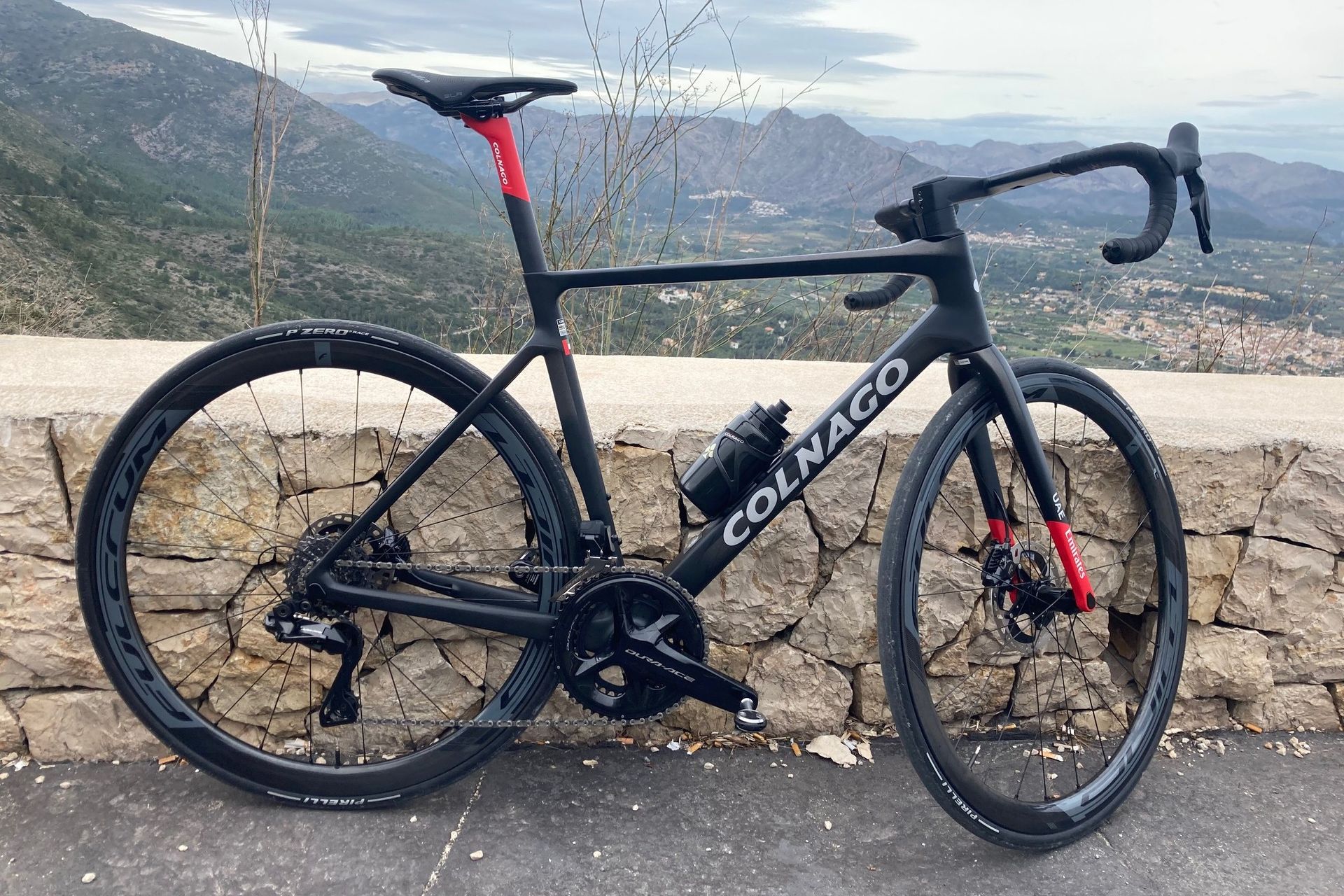
(Image credit: Simon Smythe)
It is highly likely that the Colnago-buying public will have different requirements and expectations of the bike compared with the UAE pros. The most obvious: will a bike built for a 24-year-old to win the Tour de France also be suitable for the type of amateur rider who can afford to buy one with their own money and who will be let’s face it, considerably older if he (it will probably be a ‘he’) can spend £15K on a bike?
And then there’s the question of where Colnago’s heritage fits in.
More than once at the launch the Colnago team are questioned by cycling journos why there’s no ‘classic’ Art Decor paint scheme, I admit that I ask whether they think Colnago fans will find the V4RS’s three colour options (black, white and red) a bit boring, and the subject of Ernesto Colnago’s signature not appearing on the top tube any more keeps coming back.
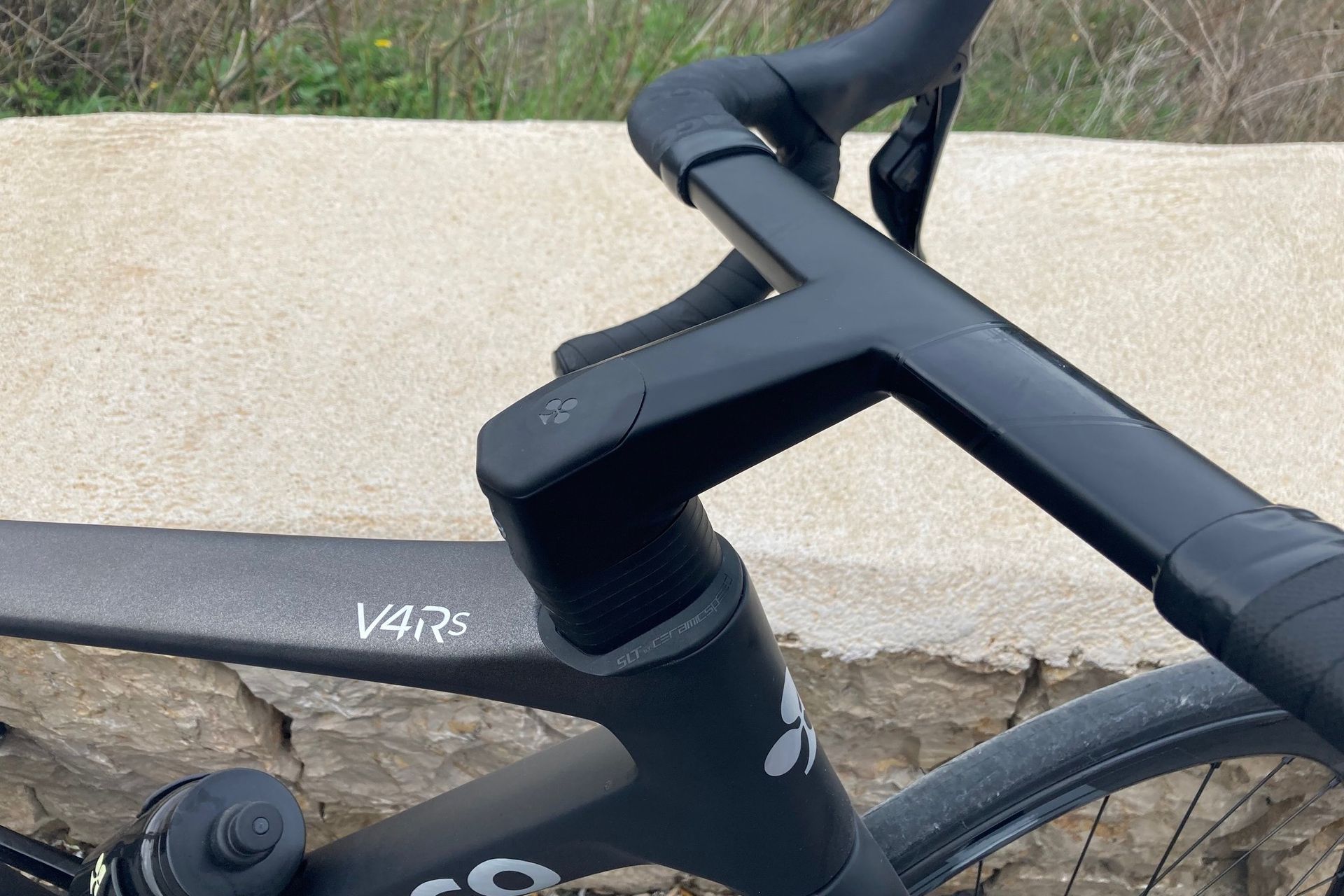
(Image credit: Simon Smythe)
Colnago engineer Tommaso Cervetti, who worked on the V4RS, tells us that the new Colnago without the Colnago family (opens in new tab)has to move forward, they have to create modern, world-beating race bikes and they sponsor a WorldTour team led by a double Tour winner.
My first conversation with Fjeldskaar was about football. I had left a bitter England behind – bitter not just because it was freezing cold but also because we’d gone out of the World Cup thanks to yet another penalty fail.
“If you’re from Norway you never need to stress about how your national team is doing in the World Cup,” he says. “I can just enjoy the football.”
And in some ways his hiring by Colnago is the same. With Ernesto now gone and the famous signature no longer on the top tube, has the Italian brand deliberately hired a foreign designer who doesn’t have skin in the game to lift the brand clear of those vague but strongly held notions of passion, pedigree and the other things that supposedly define ‘thoroughbred’ Italian race bikes?
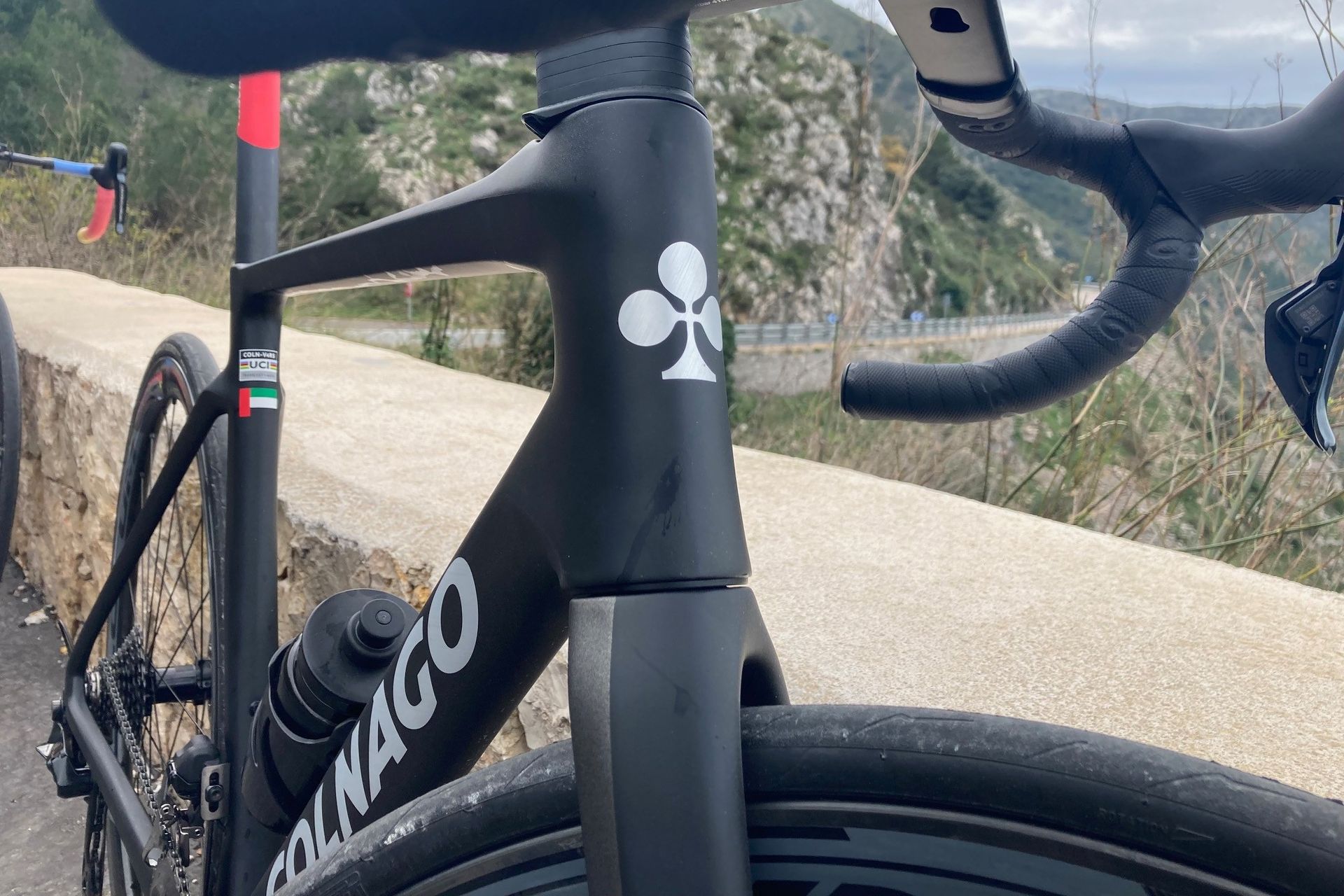
(Image credit: Simon Smythe)
Before we get to see the bike in the flesh, I mention to Fjeldskaar that some of his signature angular design features have been noticed in the new V4RS, particularly at the front, and he replies that it’s nothing like a BMC, “in real life it’s like a Colnago – you’ll see”.
He’s right. It’s angular but it’s an elegant-looking machine and has subtle silver shading on some of the black tubes that deliberately accentuate the edges.
The Dura-Ace groupset matches the sculpted black frame – something else that has stirred up the ‘purists’ who believe a Colnago should only ever be built with Campagnolo (conveniently forgetting all the Mapei victories on Shimano). UAE Team Emirates are now a Shimano-sponsored team and will no longer use Campagnolo, as of 2023.
The V4RS was launched to the UAE team the night before it was launched to the world and Fjeldskaar was present for a Q&A with the team riders. He says he was impressed by the number of questions and the quality of them. “Pros care much more about bikes now and are much more knowledgeable than they used to be,” he observes.
I wondered if we journalists can’t properly free ourselves from obsessing over Ernesto’s signature or why it didn’t come in more exciting colours…
Colnago V4RS: the ride
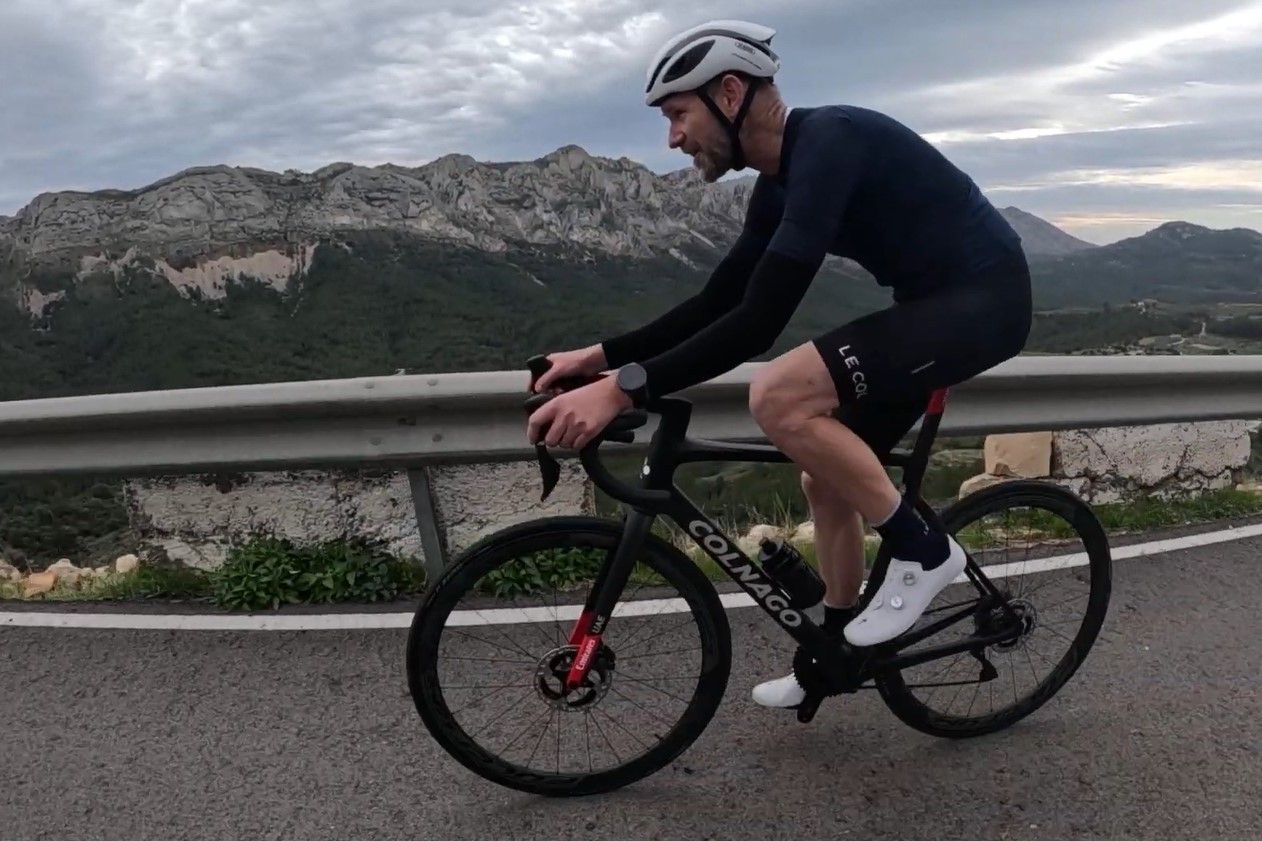
(Image credit: Will Jones)
I admit I’m not the easiest person to please when it comes to judging a new Colnago, not only because I own an old steel Master Olympic which I’ll keep forever but also because I absolutely loved the Colnago C68 that was launched in early 2022 (opens in new tab) and gave it five stars in my review in Cycling Weekly magazine (online version coming soon, no change to the score). So it needs to work hard to impress me.
The media first ride on the V4RS didn’t get off to a great start – since most of Europe was frozen, flights had been delayed and the media test bikes only got to the hotel at La Nucia the night before, so had to be somewhat hastily assembled.
Putting them together still took long enough that the UAE team left without us (probably a good thing), and then once we finally got going we kept stopping to fix slipping seatposts, Di2 gears that needed adjusting and saddle heights and so on.
We were headed for the Coll de Rates, the Costa Blanca’s best known climb and one that’s used for every pro team training camp in the area – and there were a lot of them.
But first we had to get out of La Nucia, a posher suburb of Benidorm, and that meant dual carriageways punctuated by roundabouts with traffic coming from the wrong direction (if you’re British) which wasn’t going to stop to allow our group to stay together.
Repeatedly chasing to get back on started to give me a feel for the bike. It’s pretty good at accelerating. I might have been worried about the traffic and the fact that Eric from roadbike.de said he had averaged 400 watts since leaving the hotel (he is a 90kg German powerhouse to be fair) but the V4RS felt stable yet responsive and was going to get me to the bottom of the Coll de Rates with minimum input – and hopefully up to the top too.
It’s not a massive climb at all – 625 metres in 6.5km with an average gradient of 5% – so as we hit the lower slopes I pushed ahead to get some clear GoPro footage. The bike felt very direct climbing in the saddle, and getting out of the saddle for the few hairpins where it steepened it felt equally efficient.
The CC.01 bar has a comfortable flat top for climbing in the saddle and overall feels surprisingly plush for a one-piece bar. I thought the Vision 6D cockpit was a bit too stiff for regular riders when I reviewed it, but the CC.01 is fine for those who don’t get involved in strongarm sprinting.
It also has a longish reach that, combined with the quite long geometry of the V4RS, gives a position that is relatively stretched out – which is something that suits me. I’m pretty sure it wasn’t far off my actual bike fit measurements.
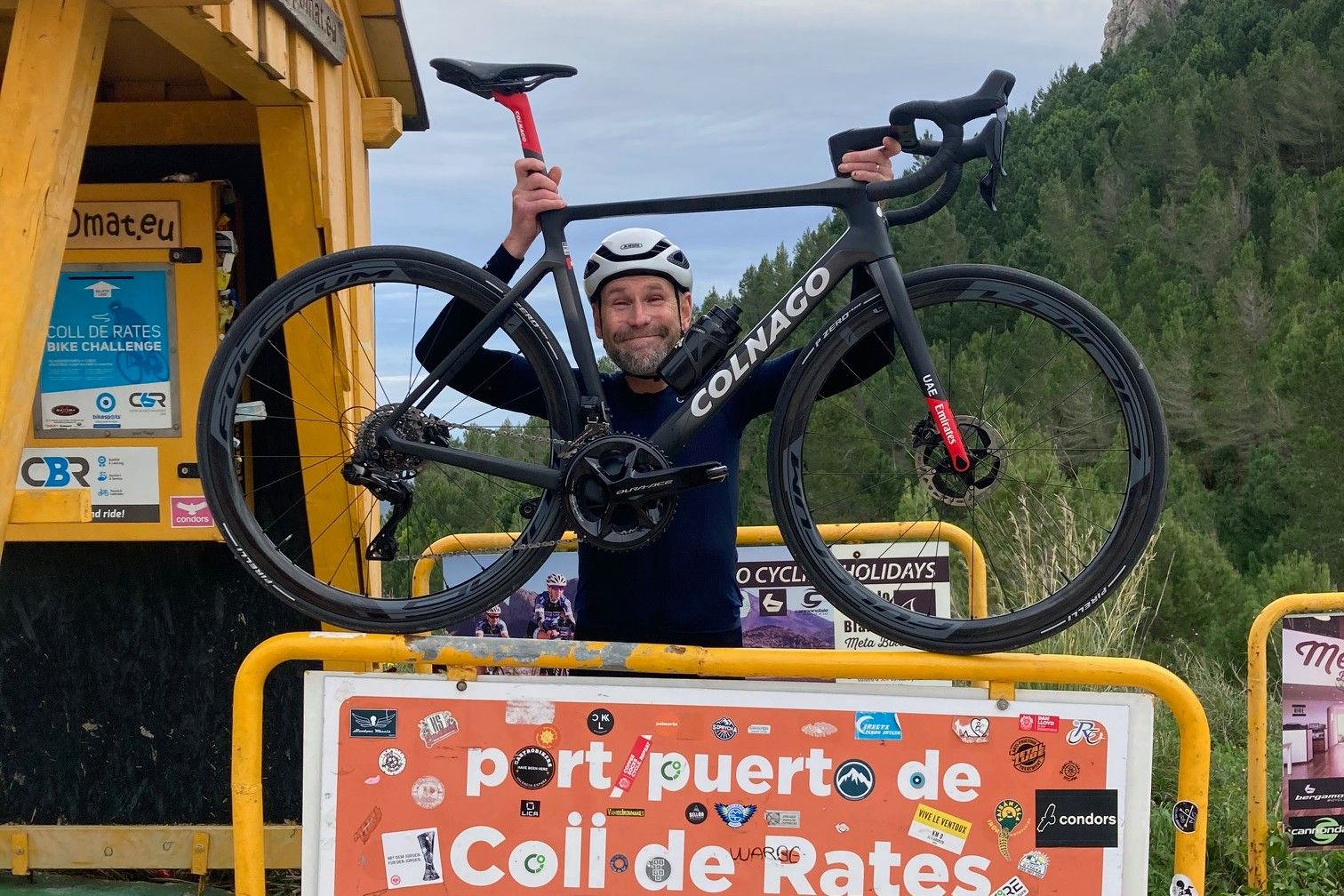
(Image credit: Simon Smythe)
A 5% climb isn’t really steep enough for weight to play much of a part, but the V4RS is of course designed to be built down to 6.8kg. With the Fulcrum wheels my test bike was fitted with (the UAE team will be on Enve 3.4, which they wind tunnel-tested with the new bike and found to be the fastest option) it didn’t feel quite that light, but I had the impression it was carrying me up the lower slopes as rapidly as any bike without a motor could.
We passed a British guy on an exquisitely painted steel Pegoretti, a recently retired surgeon who owned two of them.
It was ironic that when we stopped at the cafe not far from the top, all eyes were on the steel Pegoretti with its mechanical Campagnolo groupset and rim brakes while the state-of-the-art black Colnagos were leant up against tables and forgotten about. An old Belgian guy who was already at the cafe drinking con leche even grumbled at me to move my ‘fiets’.
It was a little bit awkward for Tommaso and Gabriele from Colnago who witnessed it, but it seemed to demonstrate that in a blind test the V4RS lacked wow factor.
Onwards and upwards, and although the V4RS might not have passed the showing-off-at-the-cafe-stop test, it was still winning for me as we headed towards the top of the Rates. I settled into a rhythm and it seemed to flatter my in-the-saddle climbing despite my December fitness level.
Then we regrouped and started the descent down the other side – the more famous side with the village of Parcent at the bottom.
My V4RS was set up with Continental brakes and that needed to be remembered, but nevertheless I found myself picking up speed very quickly, nailing the bends with increasing confidence, catching and passing Eric from roadbike.de before being passed myself by a young pro (they were everywhere) who was absolutely flying. I tried to follow him for a while, with surprising success and never feeling as though I was risking my life.
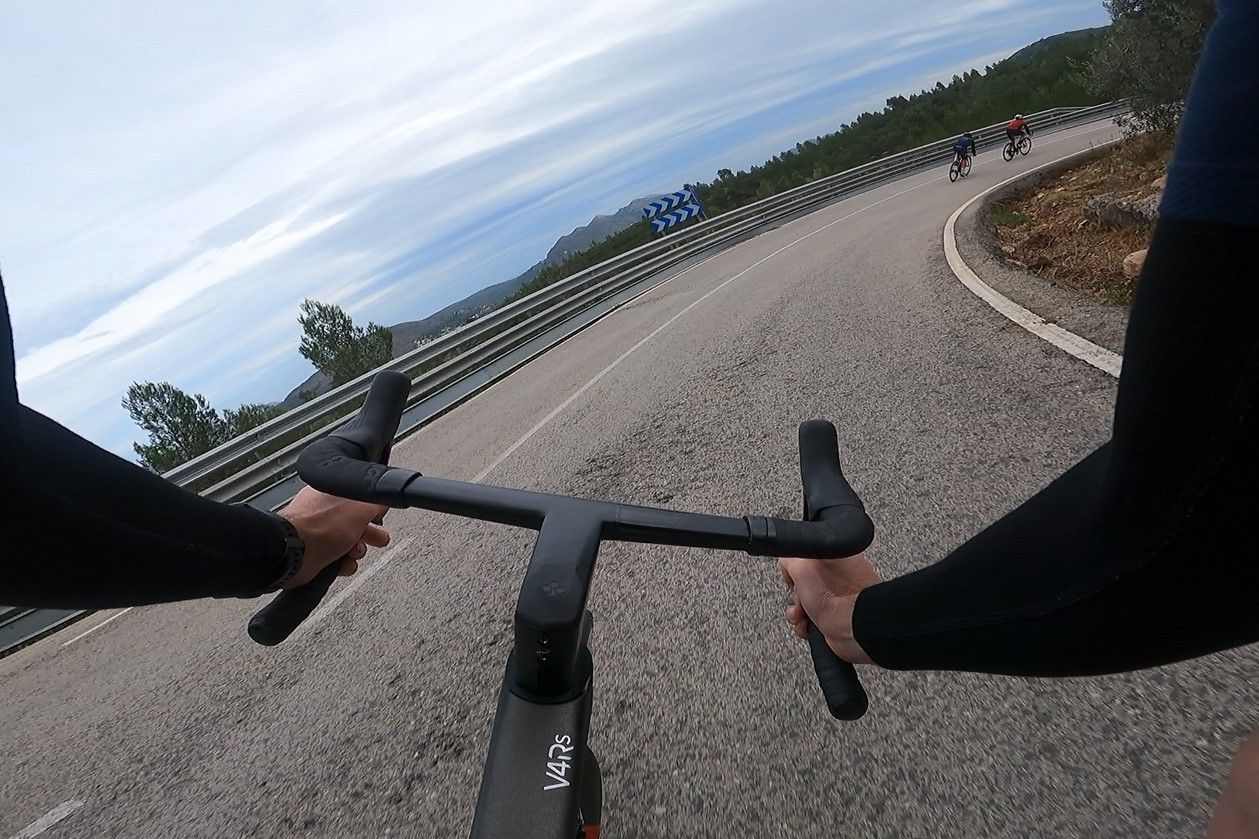
(Image credit: Simon Smythe)
Once I started leaning into a bend and aimed the bike at the apex, it felt incredibly stable, laser guided almost. There was no possibility of it wandering or being flicked off its line. I’ll avoid the ‘cornering on rails’ cliche but the V4RS has everything right for fast, confident descending. The disc brakes were making a really horrible noise but let’s not open that one and assume they were just bedding in.
We turned round at Parcent and headed back up the climb since we’d passed the UAE team going in the opposite direction. Of course we’d never catch them, but there was a plan that we’d meet them at the top and all ride back down to the hotel together.
As it was, there were groups of UAE riders behind us on the road too, and they streamed languidly past, smiling and calling “easy guys, easy, easy!” as we sweated our way up at half the speed with Eric from roadike.de on the front.
I tried sitting on the back of one of the groups and lasted maybe a minute at well over threshold power, while they laughed, looked about, danced out of the saddle and made it all look delightfully easy and fun.
Nearer the top, a rider in orange Ineos training kit passed me and did a little acknowledgement with his fingers – Adam Yates training with UAE (opens in new tab), his new team for 2023.
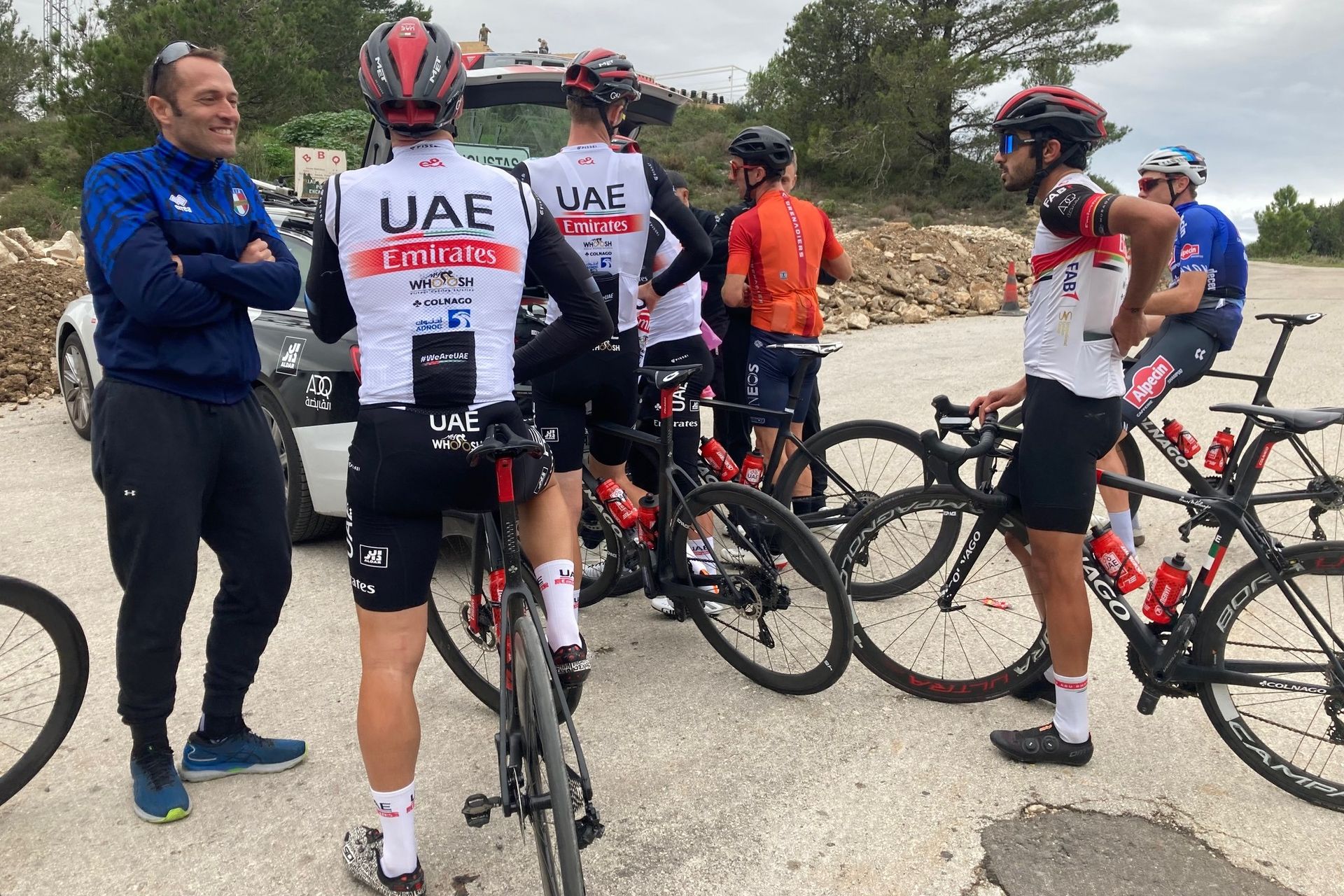
(Image credit: Simon Smythe)
The pros all stopped at the top, had something to eat and got gilets and warmers passed out from a team car. They headed off super smoothly without warning, and again we missed riding with them.
It turned out Pogačar’s group was actually behind us on the road and those of us pointlessly chasing the UAE group ahead missed him. And then, when we waited once we were back in the built-up area, he swooped across the roundabout and headed off down a different road.
On the way back down to the hotel, we journalists seemed to be in agreement that the V4RS didn’t actually feel all that fast. You couldn’t really whip it around like other race bikes – or at least we couldn’t. I ventured that this was because it was designed to resist the twisting forces of 24-year-old Tour de France winners rather than providing an exciting ride for a 54-year-old cycling journalist. We would never find the limits of its stiffness in our little sojourn.
That said, I genuinely did get a hint of the V4RS’s huge capability (in the right hands) on the descent of the Coll de Rates. And well as flattering my descending I was pretty pleased with how it had gone uphill considering how few watts I was putting through it (compared to the UAE riders, anyway).
But I couldn’t help thinking back to my time on the Colnago C68 and how for me it excelled in every single scenario – including stealing the show at the cafe stop.
I only rode the V4RS that single time before going home to freezing England, but on first impressions my instinct would be to leave it to the pro riders it’s designed for. I don’t have any doubt that it is a bike capable of winning the Tour de France in 2023 or any other pro race. But for an old guy like me who appreciates a nice, refined ride quality and doesn’t need uncompromising stiffness or marginal watt savings, the C68 would be the Colnago for me if was in the fortunate position of being able to buy a new one.
And although it doesn’t have Ernesto’s signature on it – and I’m actually fine with that – I do like that the C68 is made in Cambiago.
But there are those people who just want to ride the world’s top race bike no matter where it comes from or no matter how unremarkable it looks and there’s no arguing that that’s the V4RS and not the C68. Those people will not be disappointed with the V4RS.
[ad_2]
Source link